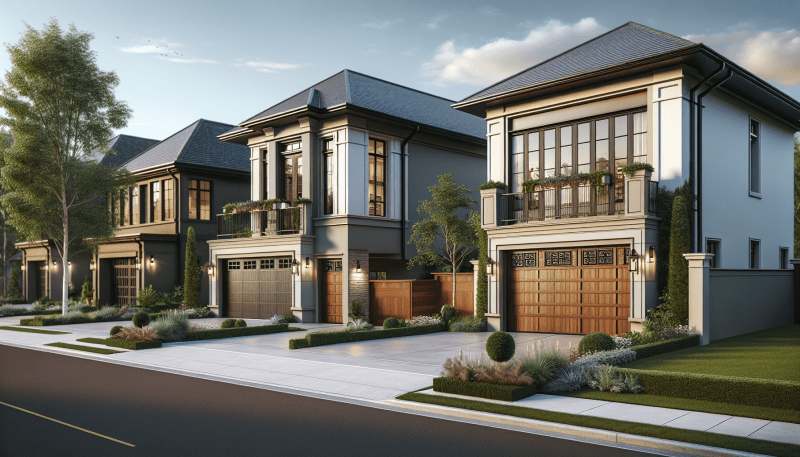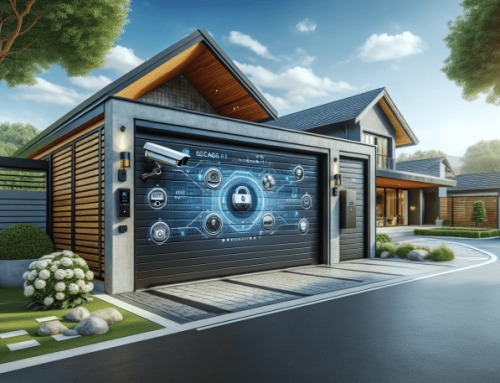Choosing the right garage door for your style can significantly enhance your home’s curb appeal and functionality. With so many options available, how do you determine which door complements your aesthetic while meeting your practical needs? At Garage Door Pros, we understand that the perfect garage door is not just about looks; it’s about finding a balance between style, security, and efficiency.
When selecting a garage door, consider factors such as material, design, and insulation. For instance, wooden doors offer a classic charm, while steel doors provide durability and security. Additionally, modern options like glass doors can create a sleek, contemporary look. Each choice reflects your personal style and can elevate the overall appearance of your home.
But these considerations are just the beginning. In this article, we’ll explore various garage door styles, materials, and features to help you make an informed decision. Whether you’re leaning towards a traditional look or a modern aesthetic, we’ll guide you through the essential elements to consider. Let’s dive into the world of garage doors and discover the perfect fit for your home!
Understanding Garage Door Styles
When selecting a garage door, understanding the various styles is crucial. Traditional garage doors often feature raised panels and a classic design. They seamlessly blend with colonial or craftsman-style homes, enhancing their timeless appeal. In contrast, modern garage doors showcase sleek lines and minimalistic designs. These doors work well with contemporary architecture, adding a touch of sophistication.
Carriage house doors evoke a rustic charm. They mimic the look of old barn doors, making them perfect for farmhouse or cottage-style homes. Their unique design can elevate the overall aesthetic, creating a warm and inviting atmosphere. Each style offers distinct visual characteristics that can complement your home’s exterior.
To make an informed choice, consider how each style aligns with your home’s architecture. For instance, a traditional door may not suit a modern home, while a sleek design might clash with a rustic setting. Explore various options and visualize how they fit your space. For more insights on types of garage doors, or to learn about our services, visit our website.
Material Considerations
When selecting a garage door, the material plays a crucial role in performance and aesthetics. Common options include wood, steel, aluminum, and fiberglass. Each material has distinct advantages and drawbacks.
Wood offers a classic look and excellent insulation. However, it requires regular maintenance to prevent rot and warping. Steel is durable and low-maintenance, making it a popular choice. Yet, it can be prone to rust if not properly coated. Aluminum is lightweight and resistant to corrosion, but it may not provide the same insulation as steel or wood. Fiberglass is versatile and can mimic other materials. It is also resistant to dents, but it can fade over time.
Consider your local climate when choosing a material. For instance, if you live in a humid area, opt for materials that resist moisture. Additionally, think about your personal style and how the door will complement your home. For more information on different types of garage doors, visit this link. If you need assistance with installation, check out our services.
Size and Fit
When selecting a garage door, size and fit are crucial. Standard garage door sizes typically include 8×7 feet, 9×7 feet, and 16×7 feet. To measure for a proper fit, start by measuring the width and height of the garage opening. Ensure you account for any obstructions, such as light fixtures or shelving, that may affect the door’s operation. Additionally, consider the headroom above the door; this space is essential for the door’s mechanism.
If your garage opening does not conform to standard sizes, custom doors may be necessary. Custom options allow you to achieve a perfect fit, enhancing both functionality and aesthetics. When opting for a custom size, consult with professionals to ensure accurate measurements and installation. This step is vital to avoid future complications.
For more information on different types of garage doors, visit our types of garage doors page. If you need assistance with installation, check out our installation services. For any questions, feel free to reach out through our contact page.
Insulation and Energy Efficiency
When selecting a garage door, insulation plays a crucial role in enhancing energy efficiency. Proper insulation minimizes heat transfer, keeping your garage comfortable year-round. This not only reduces energy costs but also contributes to a more sustainable home environment.
Several insulation options are available, including polystyrene and polyurethane. Polystyrene offers decent insulation at a lower cost, while polyurethane provides superior thermal resistance. Choosing the right material depends on your specific needs and budget.
To evaluate the R-value of a garage door, look for the insulation’s resistance to heat flow. A higher R-value indicates better insulation performance. For optimal energy savings, aim for a garage door with an R-value of at least 10. Additionally, consider the door’s overall construction and sealing, as these factors also influence energy efficiency.
By investing in a well-insulated garage door, you can enhance your home’s comfort and reduce energy bills. For more information on types of garage doors or to explore frequently asked questions, visit our website.
Security Features
When selecting a garage door, security should be a top priority. A robust garage door acts as the first line of defense against intruders. Look for doors made from reinforced materials, such as steel or fiberglass, which offer enhanced durability. Additionally, consider options with smart technology, like remote access and alerts, to monitor your garage’s security in real time.
To further bolster security, install a quality locking mechanism. Deadbolts and automatic locks provide extra protection. Moreover, consider adding motion-sensor lights around your garage. These lights deter potential intruders by illuminating the area when movement is detected.
Another effective strategy is to maintain your garage door regularly. Ensure that all components, including springs and tracks, are in good condition. For professional assistance, check out our services to keep your garage door secure. Lastly, always remember to close your garage door when not in use. This simple action can significantly reduce the risk of unauthorized access. For more tips on enhancing your garage security, visit our blog.
Style and Color Options
Choosing the right color and finish for your garage door significantly impacts your home’s overall aesthetic. A well-chosen hue can enhance curb appeal and create a cohesive look. For instance, neutral tones like white, gray, or beige often complement various architectural styles. On the other hand, bold colors such as deep blue or rich red can make a striking statement.
When selecting a color, consider the existing exterior elements of your home. Look at the siding, roof, and trim colors. Aim for harmony; a contrasting color can work well if it aligns with your home’s style. Additionally, finishes play a crucial role. Glossy finishes reflect light and can make a door appear more modern, while matte finishes offer a more subdued, classic look.
Currently, popular trends include dark colors and natural wood finishes. These options provide a sophisticated touch and blend well with landscaping. For more insights on garage door styles, explore our types of garage doors. If you need assistance, our contact us page is available for inquiries.
Budgeting for Your Garage Door
When selecting a garage door, several factors influence the overall cost. First, the material plays a significant role. Steel, wood, and fiberglass each come with different price points. For instance, a basic steel door may start around $500, while a custom wooden door can exceed $3,000. Additionally, the style of the door affects pricing. Traditional raised-panel doors are often less expensive than modern carriage-style options.
Features also contribute to the cost. Insulation, windows, and smart technology can increase the price significantly. Therefore, it’s essential to consider these elements when budgeting.
Moreover, installation and maintenance costs are crucial. Professional installation typically ranges from $300 to $1,000, depending on the complexity. Regular maintenance, such as lubrication and inspections, can prevent costly repairs down the line. Always factor in these ongoing expenses to ensure your budget remains realistic. For more insights on types of garage doors, visit our types of garage doors page. If you need assistance, check our contact us section for expert help.
Maintenance and Longevity
When it comes to garage doors, maintenance varies significantly among different types. For instance, wooden doors require regular painting or staining to prevent rot. Conversely, steel doors need periodic rust treatment to maintain their appearance. Regardless of the material, all garage doors benefit from routine inspections. Check the springs, cables, and rollers for wear and tear.
To extend the lifespan of your garage door, lubricate moving parts every six months. This simple step reduces friction and prevents premature wear. Additionally, keep the tracks clean and free of debris. If you notice unusual noises or difficulty in operation, address these issues promptly.
Common problems include misaligned tracks and malfunctioning openers. If your door won’t open, check the remote batteries first. For more complex issues, consult a professional. Regular maintenance can prevent costly repairs and ensure smooth operation. For expert assistance, visit our service page or learn more about our about us section. Don’t hesitate to reach out through our contact us page for any inquiries.
Professional Installation vs. DIY
When considering installation methods, weigh the pros and cons of professional installation against DIY. Professional installation offers expertise and efficiency, ensuring your garage door operates smoothly. However, it often comes with a higher price tag. Conversely, DIY installation can save money, but it requires a certain skill level and time commitment.
Before deciding, assess your comfort with tools and technical tasks. If you lack experience, hiring a professional might be wise. Additionally, consider the complexity of the garage door system. Some models demand specialized knowledge for proper installation.
If you choose the DIY route, prepare a checklist of essential tools. You will need a drill, level, measuring tape, and safety goggles. Familiarize yourself with the installation manual and watch tutorial videos for guidance. Ensure you have a helper, as some tasks require extra hands.
Ultimately, your decision should align with your skills and budget. For more information on types of garage doors or to explore our services, visit our website. If you have questions, check our FAQ section for assistance.
Frequently Asked Questions
When selecting a garage door, many questions arise. One common inquiry is about the best material for a garage door. Steel doors offer durability and low maintenance, while wood provides aesthetic appeal. Additionally, fiberglass is lightweight and resistant to dents.
Another frequent question concerns the appropriate size for a garage door. To determine the right size, measure the width and height of your garage opening. Standard sizes are available, but custom options exist for unique spaces.
Security features are also a priority for many homeowners. Look for doors with sturdy locks and reinforced frames. Smart technology, such as remote access and alerts, enhances security further.
If you have more questions or need personalized advice, don’t hesitate to reach out. Our team is ready to assist you. For more information, visit our about page or check out our FAQ section. You can also explore various types of garage doors to find the perfect fit for your home.






